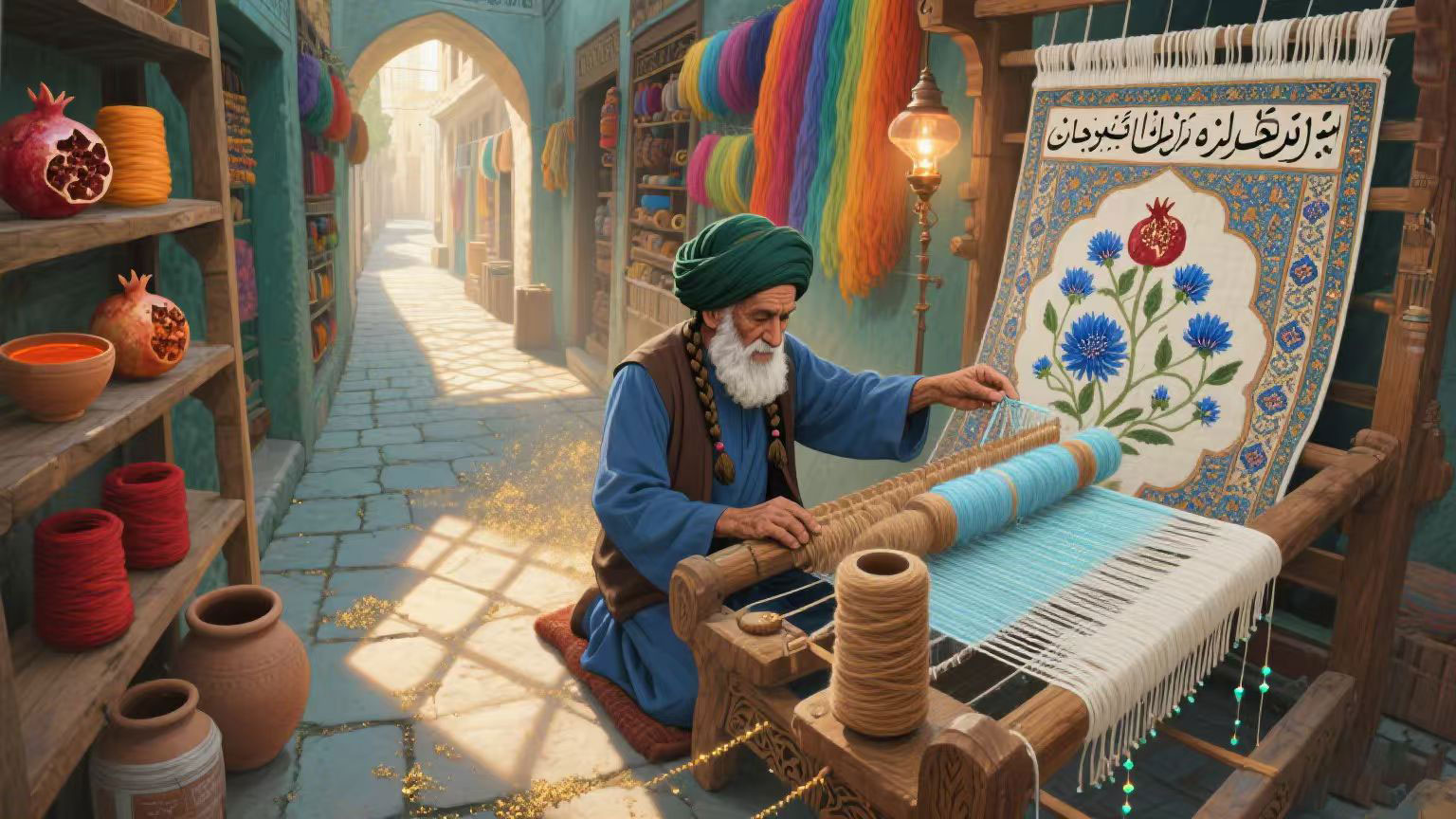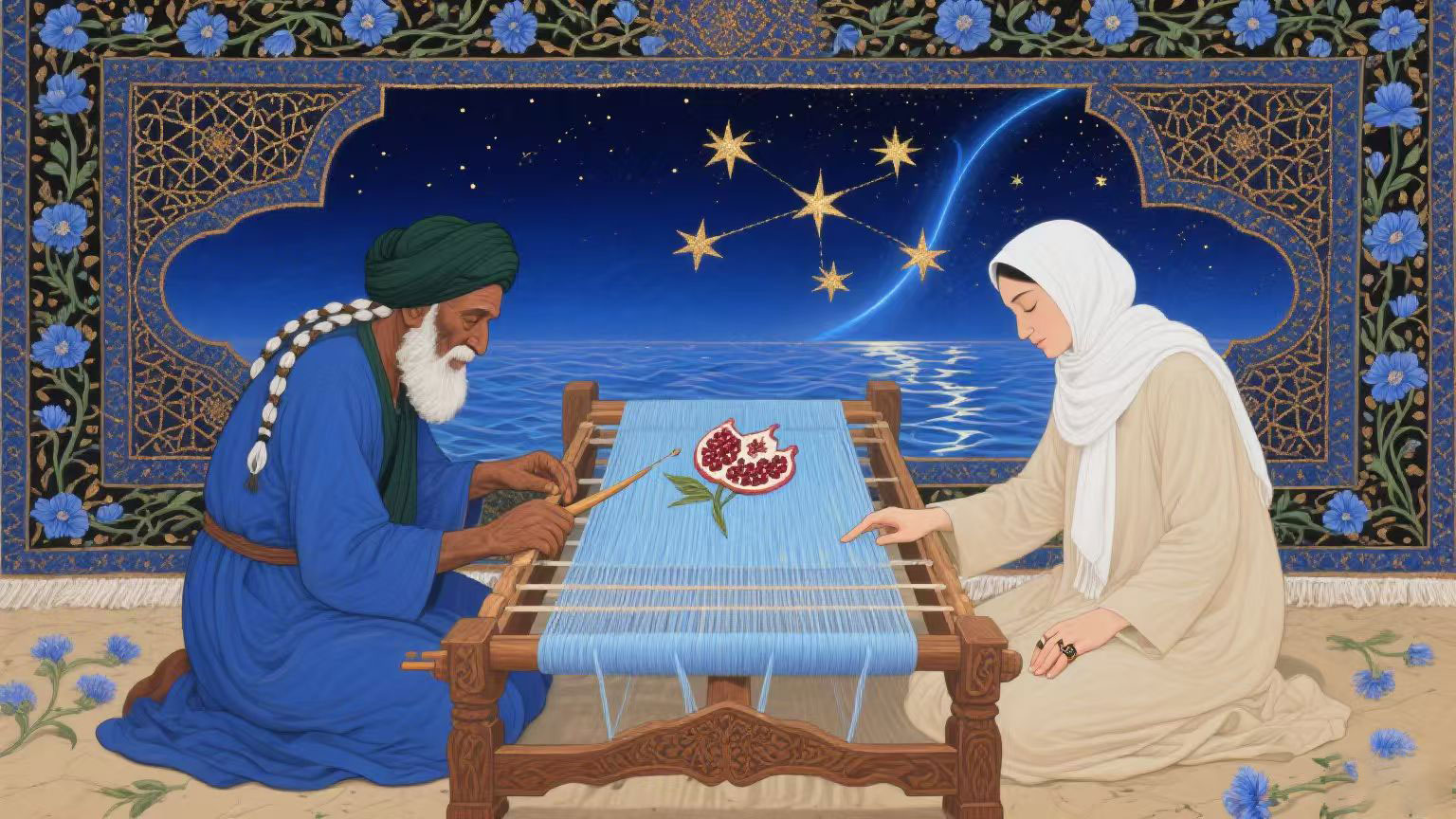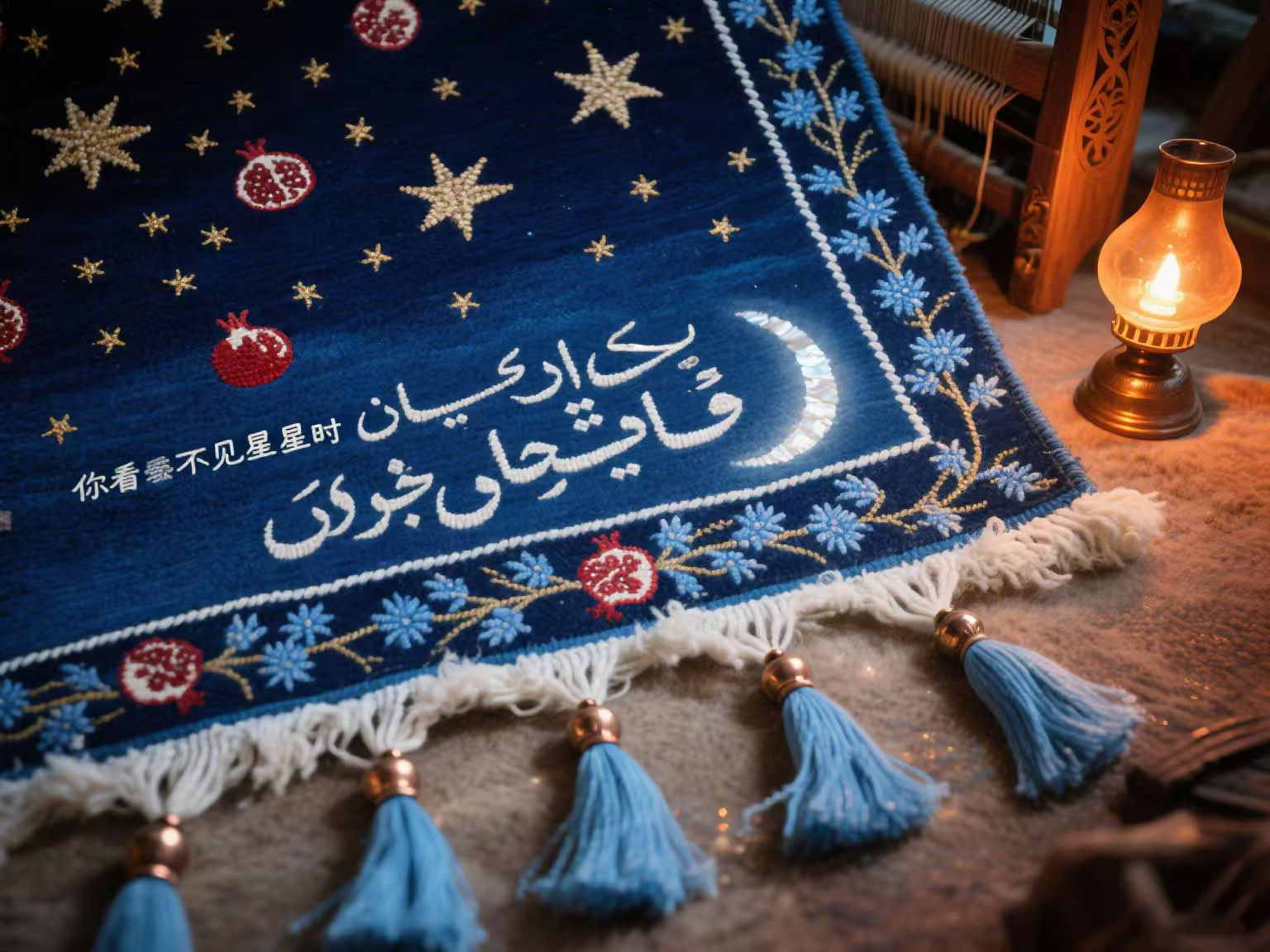+86-13516938893
Menu
global purchase
Deep in the ancient city of Tabriz in northwestern Iran, there lies a hidden "Silk Thread Alley" tucked away in the bazaar. At the end of the alley, in an old workshop, seventy-year-old carpet weaver Musa always lights a brass lamp before dawn. His fingertips brush over the wooden shuttles wrapped in woolen threads—among them, one bundle is particularly special: silk threads shimmering with a pale blue glow, like crushed starlight woven into the wool.

"This is 'moonlight thread,'" Musa often tells his apprentices. "It only glows if spun on a full moon night." But no one knows that this bundle of threads holds a promise he made to his wife Fatima fifty years ago.
In his youth, Musa was a newly trained weaver, and Fatima was a girl who sold dyes in the bazaar. She would always stand beside his loom, smiling, carrying a basket of threads dyed with pomegranate rind and madder root. "Musa," she’d say, "your carpets are beautiful, but they’re missing stars that shine." She’d heard tales of a blue thistle flower along the Caspian coast, a flower that secretes luminous sap under the moon—threads dyed with it could capture moonlight.
"When I’ve saved enough money, I’ll take you to pick those thistles," Musa told her, pressing a gentle kiss on her dye-stained fingertips. "We’ll weave a carpet with stars." He wove that promise into the edge of the first carpet he gave her—tiny white threads hidden within the intricate Persian patterns.
But fate is cruel. Three years into their marriage, Fatima developed an eye illness and slowly lost her sight. She ran her fingers over the half-finished carpet Musa was weaving, her voice soft as a feather: "No need for thistles. I can 'hear' the stars in your weaving." Musa never gave up. He slung a backpack over his shoulder and set off alone for the Caspian coast.
The journey took three months. He got lost in rainstorms, was chased by wolves below snow-capped mountains, and finally, on a full moon night, found the legendary blue thistle field. The blue flowers glowed like scattered diamonds under the moon. He picked the petals carefully, filled a clay jar with their sap, and walked home with worn-out shoes and bloodied soles.

By the time he returned, Fatima was completely blind. Musa boiled the thistle sap into dye and let a drop fall on her fingertip. "Feel this," he said. "It’s the color of moonlight." Fatima smiled, running her finger over the blue-dyed wool. "Softer than stars," she whispered.
For the next forty years, Musa wove that "stardust carpet" every day. Fatima sat beside him, "reading" the patterns with her fingertips, telling him where to add a flower or a leaf. Musa hid the blue thistle threads in the carpet’s starry sections—only under moonlight would they glow, a flowing blue like the Caspian waves reflecting the sky.
Last autumn, Fatima passed away. Musa laid the fifty-year-old carpet over her grave. Under the moon, the blue threads’ light formed half a thistle blossom on her tombstone—the same flower Fatima had tucked behind her ear when they first met.
Now, a young apprentice works in Musa’s workshop: Fatima’s granddaughter, whom she never got to meet. The little girl pestered him constantly: "Grandpa, why do the stars on this carpet glow?" Musa would place the remaining bundle of thistle threads in her hand. "Because they hold two people’s promise," he said. "Just as moonlight never forgets to shine on flowers, a true promise never fades with time."
Old bazaar regulars say that on every full moon night, a pale blue light seeps from Musa’s workshop. In that light, you can almost see a young girl dyeing threads, a weaver bending over his loom under the moon, and an endless carpet that has woven fifty years of time into indelible stardust.

On the edge of that "stardust carpet," the tiny white threads Musa hid so long ago are still there—words polished smooth by time: "When you can’t see the stars, I’ll weave moonlight into your carpet."